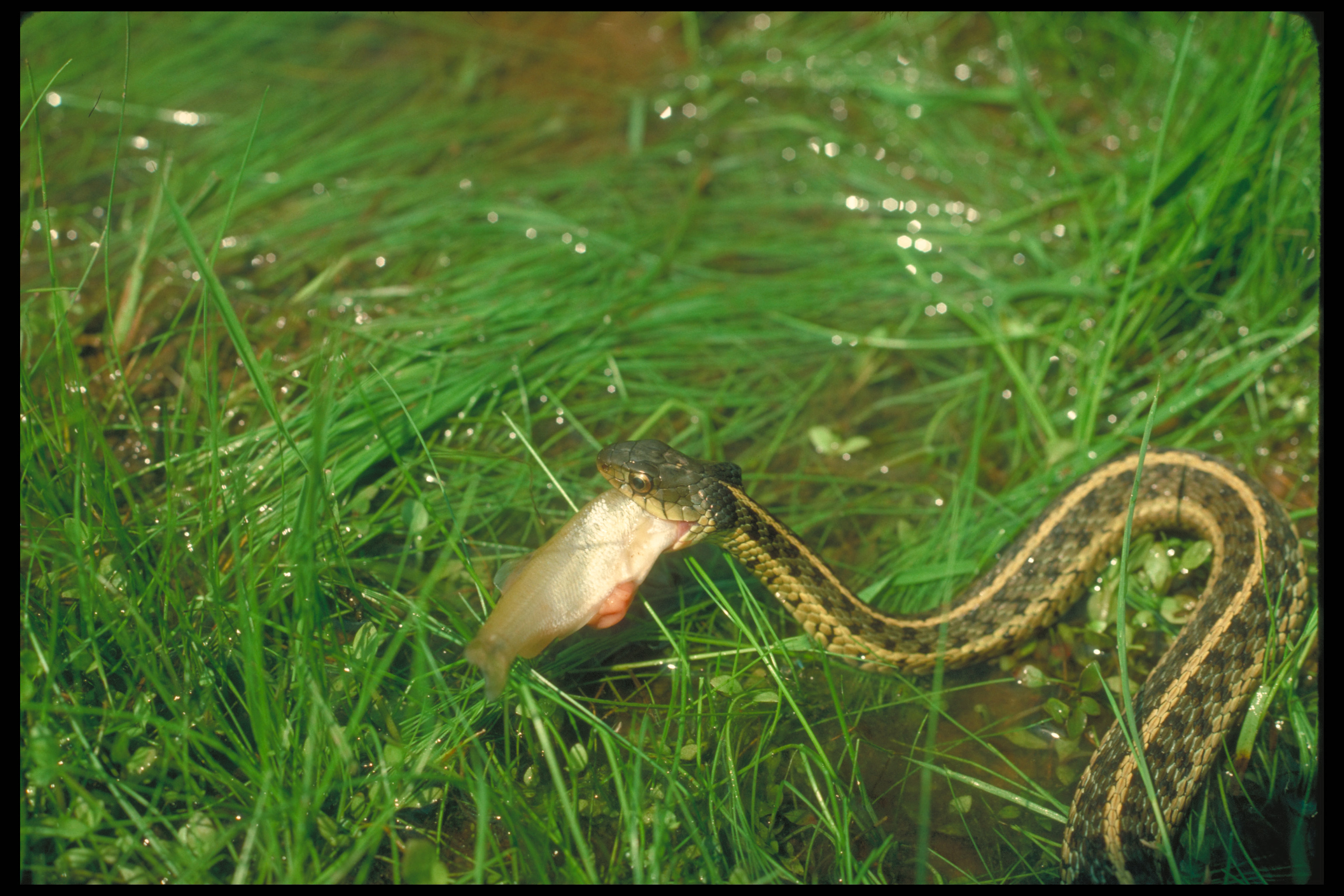
Garter Snakes
Garter snakes are one of the most successful and widespread snakes in the USA, and also inhabit some areas of Mexico.
In captivity these beautiful snakes can make stunning pets.
A wide range of different species of garter snakes, all kept the same, provide a lot of variety.

And yet, garter snakes generally grow to be quite a bit smaller than many other popular snakes such as corn snakes. This, combined with the way small groups will live together happily and that they are active snakes, awake during the day, mean they are an ideal captive.
On the other hand, garter snakes stand out from the crowd of other snakes because firstly they give birth to live young rather than laying eggs, the young are particularly small and so extra effort is required to grow them up to adult size, and the diet can be a challenge.
Whilst some garter snakes will elarn to take pinkies, or at least parts of pinkies, still others will require other fare as discussed in our garter snake food section.
There's lots to learn, so let's jump straight in and take a look at a range of common questions asked by new and potential garter snake keepers...
Caring For Garter Snakes
Garter snakes are surprisingly simple to care for in captivity.
They require a reasonably-sized cage because they are quite active snakes. A cage measuring 60cm x 30 cm will easily house two or three specimens and in general they will live happily together for life.
This cage should be heated at one end to a temperature of around 25 - 28'C which will suit garter snakes right through the year.
Being quite a shy snake, when caring for garter snakes it is important to include a number of places to hide. Curved bark, small pieces of wood, rocks and custom-bought hides will all the job, as will some artificial plant matter if it is dense enough.
If using the heavier materials - such as rocks and slate - it is adviseable to use aquarium sealant to glue the hide into place so your garter snakes can't disturb them and so risk crushing themselves.
The base of the cage should be lined with a suitable reptile-safe substrate of which bark shippings (sometimes known simply as "forest" or "rainforest" substrate) does an admirable jobin this department.
I also like to add some moss, leaves, bark and other items found in my local forest to make it look more realistic though this is by no means essential.
Water should be available at all times for your garter snakes to drink and/or bathe in.
Garter snakes should ideally be fed once or twice a week. With their active lifestyle they can get through quite a few calories and for growing youngsters the more frequent feeding pattern is strongly recommended.
The diet when caring for garter snakes is discussed fully here.
Besides feeding, and daily changing og the water to keep it fresh, another regular task worth carrying out is a cage check once week or so.
Check it over the ensure the heating and lighting is working as they are supposed to - that the cage isn't too warm or too cold for example.
Also check that there are no gaps in the cage that have appeared which may enable your snakes to escape.
As tends tend only to defecate a few times a week, they only need cleaning thoroughly a few times a year.
Of course, for this to work you need to remove these movements as soon as they are produced, and any uneaten food should be removed in a timely fashion.
If this is done, a thorough clean of the cage should only be needed every 2 - 3 months.
However, if you leave until this interval, ensure the cleaning job you do is very thorough.
Remove all the substrate and dispose of it, then use a reptile-safe detergent to clean everything else - water bowl, the whole cage, hides etc. then wait until they are all bone dry again before setting up the cage once again and reinstalling the snakes you're caring for.
Where Do Garter Snakes Live?
Garter snakes hail from much of North America though as I'm sure you can guess the warmer areas tend to have a greater profusion.
Some species of garter snakes may also be found in Mexico (such as Thamnophis eques) but except for escaped pets are not found on other continents.
Within these confines, garter snakes live generally near standing water such as ponds, irrigation ditches and other moist areas though in captivity their substrate should not be allowed to get damp or skin problems can occur.